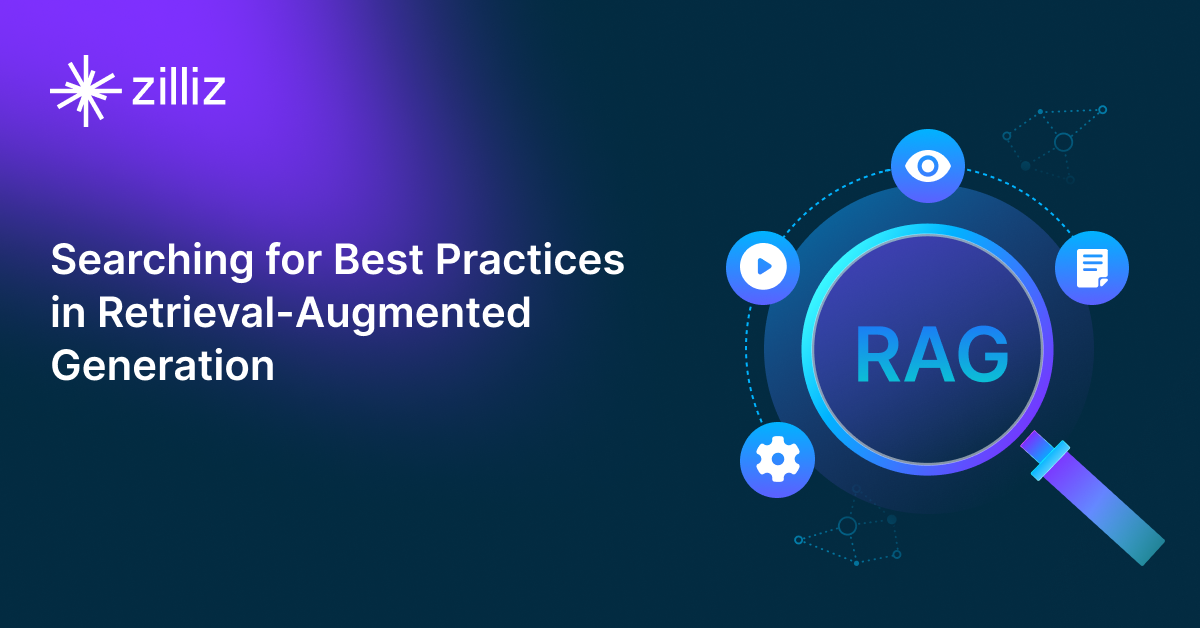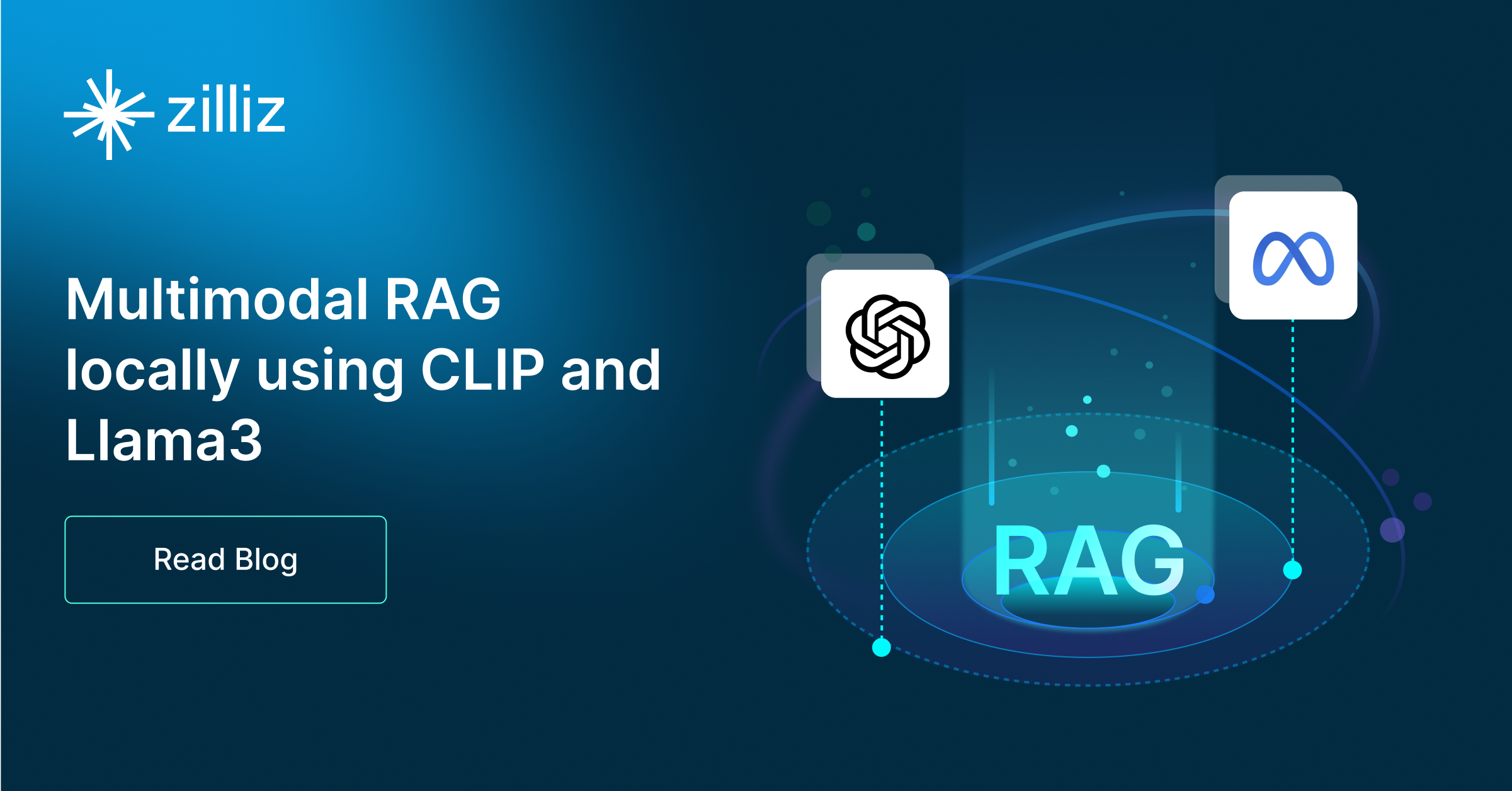Build RAG Chatbot with LangChain, Milvus, Anthropic Claude 3 Haiku, and Azure text-embedding-3-small
Introduction to RAG
Retrieval-Augmented Generation (RAG) is a game-changer for GenAI applications, especially in conversational AI. It combines the power of pre-trained large language models (LLMs) like OpenAI’s GPT with external knowledge sources stored in vector databases such as Milvus and Zilliz Cloud, allowing for more accurate, contextually relevant, and up-to-date response generation. A RAG pipeline usually consists of four basic components: a vector database, an embedding model, an LLM, and a framework.
Key Components We'll Use for This RAG Chatbot
This tutorial shows you how to build a simple RAG chatbot in Python using the following components:
- LangChain: An open-source framework that helps you orchestrate the interaction between LLMs, vector stores, embedding models, etc, making it easier to integrate a RAG pipeline.
- Milvus: An open-source vector database optimized to store, index, and search large-scale vector embeddings efficiently, perfect for use cases like RAG, semantic search, and recommender systems. If you hate to manage your own infrastructure, we recommend using Zilliz Cloud, which is a fully managed vector database service built on Milvus and offers a free tier supporting up to 1 million vectors.
- Anthropic Claude 3: This advanced AI language model from Anthropic focuses on safety and alignment, capable of generating coherent and context-aware text. It excels in creative writing, conversational AI, and insightful summarization. Ideal for creating engaging content while ensuring adherence to ethical standards and user intent.
- Azure text-embedding-3-small: This AI model specializes in generating dense vector representations of text inputs, facilitating semantic understanding and comparison. Its strengths lie in efficiency and scalability, making it ideal for applications such as text classification, information retrieval, and natural language processing tasks where rapid semantic similarity assessments are crucial.
By the end of this tutorial, you’ll have a functional chatbot capable of answering questions based on a custom knowledge base.
Note: Since we may use proprietary models in our tutorials, make sure you have the required API key beforehand.
Step 1: Install and Set Up LangChain
%pip install --quiet --upgrade langchain-text-splitters langchain-community langgraph
Step 2: Install and Set Up Anthropic Claude 3 Haiku
pip install -qU "langchain[anthropic]"
import getpass
import os
if not os.environ.get("ANTHROPIC_API_KEY"):
os.environ["ANTHROPIC_API_KEY"] = getpass.getpass("Enter API key for Anthropic: ")
from langchain.chat_models import init_chat_model
llm = init_chat_model("claude-3-haiku-20240307", model_provider="anthropic")
Step 3: Install and Set Up Azure text-embedding-3-small
pip install -qU langchain-openai
import getpass
import os
if not os.environ.get("AZURE_OPENAI_API_KEY"):
os.environ["AZURE_OPENAI_API_KEY"] = getpass.getpass("Enter API key for Azure: ")
from langchain_openai import AzureOpenAIEmbeddings
embeddings = AzureOpenAIEmbeddings(
azure_endpoint=os.environ["AZURE_OPENAI_ENDPOINT"],
azure_deployment=os.environ["AZURE_OPENAI_DEPLOYMENT_NAME"],
openai_api_version=os.environ["AZURE_OPENAI_API_VERSION"],
)
Step 4: Install and Set Up Milvus
pip install -qU langchain-milvus
from langchain_milvus import Milvus
vector_store = Milvus(embedding_function=embeddings)
Step 5: Build a RAG Chatbot
Now that you’ve set up all components, let’s start to build a simple chatbot. We’ll use the Milvus introduction doc as a private knowledge base. You can replace it with your own dataset to customize your RAG chatbot.
import bs4
from langchain import hub
from langchain_community.document_loaders import WebBaseLoader
from langchain_core.documents import Document
from langchain_text_splitters import RecursiveCharacterTextSplitter
from langgraph.graph import START, StateGraph
from typing_extensions import List, TypedDict
# Load and chunk contents of the blog
loader = WebBaseLoader(
web_paths=("https://milvus.io/docs/overview.md",),
bs_kwargs=dict(
parse_only=bs4.SoupStrainer(
class_=("doc-style doc-post-content")
)
),
)
docs = loader.load()
text_splitter = RecursiveCharacterTextSplitter(chunk_size=1000, chunk_overlap=200)
all_splits = text_splitter.split_documents(docs)
# Index chunks
_ = vector_store.add_documents(documents=all_splits)
# Define prompt for question-answering
prompt = hub.pull("rlm/rag-prompt")
# Define state for application
class State(TypedDict):
question: str
context: List[Document]
answer: str
# Define application steps
def retrieve(state: State):
retrieved_docs = vector_store.similarity_search(state["question"])
return {"context": retrieved_docs}
def generate(state: State):
docs_content = "\n\n".join(doc.page_content for doc in state["context"])
messages = prompt.invoke({"question": state["question"], "context": docs_content})
response = llm.invoke(messages)
return {"answer": response.content}
# Compile application and test
graph_builder = StateGraph(State).add_sequence([retrieve, generate])
graph_builder.add_edge(START, "retrieve")
graph = graph_builder.compile()
Test the Chatbot
Yeah! You've built your own chatbot. Let's ask the chatbot a question.
response = graph.invoke({"question": "What data types does Milvus support?"})
print(response["answer"])
Example Output
Milvus supports various data types including sparse vectors, binary vectors, JSON, and arrays. Additionally, it handles common numerical and character types, making it versatile for different data modeling needs. This allows users to manage unstructured or multi-modal data efficiently.
Optimization Tips
As you build your RAG system, optimization is key to ensuring peak performance and efficiency. While setting up the components is an essential first step, fine-tuning each one will help you create a solution that works even better and scales seamlessly. In this section, we’ll share some practical tips for optimizing all these components, giving you the edge to build smarter, faster, and more responsive RAG applications.
LangChain optimization tips
To optimize LangChain, focus on minimizing redundant operations in your workflow by structuring your chains and agents efficiently. Use caching to avoid repeated computations, speeding up your system, and experiment with modular design to ensure that components like models or databases can be easily swapped out. This will provide both flexibility and efficiency, allowing you to quickly scale your system without unnecessary delays or complications.
Milvus optimization tips
Milvus serves as a highly efficient vector database, critical for retrieval tasks in a RAG system. To optimize its performance, ensure that indexes are properly built to balance speed and accuracy; consider utilizing HNSW (Hierarchical Navigable Small World) for efficient nearest neighbor search where response time is crucial. Partitioning data based on usage patterns can enhance query performance and reduce load times, enabling better scalability. Regularly monitor and adjust cache settings based on query frequency to avoid latency during data retrieval. Employ batch processing for vector insertions, which can minimize database lock contention and enhance overall throughput. Additionally, fine-tune the model parameters by experimenting with the dimensionality of the vectors; higher dimensions can improve retrieval accuracy but may increase search time, necessitating a balance tailored to your specific use case and hardware infrastructure.
Anthropic Claude 3 Haiku optimization tips
Claude 3 Haiku is designed for efficiency, making it a great choice for low-latency RAG applications. Optimize token usage by structuring prompts concisely, removing redundant text, and leveraging system messages effectively to guide responses. Use function calling when applicable to offload structured processing tasks and improve response reliability. Batch process queries where possible to reduce API overhead and enhance throughput. If latency is critical, consider caching frequent queries and pre-generating responses for common questions. Fine-tune response control with temperature and top-p sampling; lower temperature values (e.g., 0.2-0.3) help maintain consistency in factual retrieval tasks. Use streaming mode for real-time applications to get faster partial responses while processing large prompts. Regularly evaluate and adjust model parameters based on performance benchmarks to balance speed and accuracy in your RAG pipeline.
Azure text-embedding-3-small optimization tips
To optimize the Azure text-embedding-3-small model for your Retrieval-Augmented Generation (RAG) setup, consider batching your input text to process multiple requests simultaneously, which can significantly enhance throughput. Use relevant keywords for fine-tuning the embeddings and ensure your text is preprocessed to remove noise, such as unnecessary punctuation or stop words. Experiment with different similarity metrics during retrieval, like cosine similarity, to improve result relevance. Leverage caching mechanisms to store frequently accessed embeddings, reducing response times. Finally, monitor and analyze performance metrics regularly for iterative improvements and adapt your approach based on user feedback to align the model more closely with your specific use case.
By implementing these tips across your components, you'll be able to enhance the performance and functionality of your RAG system, ensuring it’s optimized for both speed and accuracy. Keep testing, iterating, and refining your setup to stay ahead in the ever-evolving world of AI development.
RAG Cost Calculator: A Free Tool to Calculate Your Cost in Seconds
Estimating the cost of a Retrieval-Augmented Generation (RAG) pipeline involves analyzing expenses across vector storage, compute resources, and API usage. Key cost drivers include vector database queries, embedding generation, and LLM inference.
RAG Cost Calculator is a free tool that quickly estimates the cost of building a RAG pipeline, including chunking, embedding, vector storage/search, and LLM generation. It also helps you identify cost-saving opportunities and achieve up to 10x cost reduction on vector databases with the serverless option.
 Calculate your RAG cost
Calculate your RAG cost
What Have You Learned?
By now, you’ve unlocked something awesome—you’ve seen how to weave together cutting-edge tools to create a RAG system that feels almost magical! You learned how LangChain acts as the glue, orchestrating workflows between components with flexibility and ease. Milvus stepped in as your high-performance vector database, handling lightning-fast similarity searches across dense embeddings generated by Azure’s text-embedding-3-small model, which transformed your raw text into numerical magic. Then, Anthropic’s Claude 3 Haiku, with its speed and nuance, took center stage to synthesize those retrieved insights into clear, human-like responses. Together, they form a pipeline that breathes life into AI applications, letting you query complex data like a pro. And guess what? You didn’t just stop at the basics—you picked up optimization gems like chunking strategies for better embeddings and metadata filtering in Milvus to sharpen results. Plus, that free RAG cost calculator you explored? A game-changer for balancing performance and budget!
This tutorial wasn’t just about code—it was about empowerment. You now have the blueprint to build smarter, faster, and more responsive AI systems. Whether you’re enhancing customer support, powering research tools, or inventing something entirely new, you’re equipped to iterate and innovate. So what’s next? Tweak those parameters, experiment with hybrid search strategies, or plug in different LLMs to see how they dance with your data. The future of AI is yours to shape, one RAG-powered app at a time. Go build something that blows minds—yours included! 🚀
Further Resources
🌟 In addition to this RAG tutorial, unleash your full potential with these incredible resources to level up your RAG skills.
- How to Build a Multimodal RAG | Documentation
- How to Enhance the Performance of Your RAG Pipeline
- Graph RAG with Milvus | Documentation
- How to Evaluate RAG Applications - Zilliz Learn
- Generative AI Resource Hub | Zilliz
We'd Love to Hear What You Think!
We’d love to hear your thoughts! 🌟 Leave your questions or comments below or join our vibrant Milvus Discord community to share your experiences, ask questions, or connect with thousands of AI enthusiasts. Your journey matters to us!
If you like this tutorial, show your support by giving our Milvus GitHub repo a star ⭐—it means the world to us and inspires us to keep creating! 💖
- Introduction to RAG
- Key Components We'll Use for This RAG Chatbot
- Step 1: Install and Set Up LangChain
- Step 2: Install and Set Up Anthropic Claude 3 Haiku
- Step 3: Install and Set Up Azure text-embedding-3-small
- Step 4: Install and Set Up Milvus
- Step 5: Build a RAG Chatbot
- Optimization Tips
- RAG Cost Calculator: A Free Tool to Calculate Your Cost in Seconds
- What Have You Learned?
- Further Resources
- We'd Love to Hear What You Think!
Content
Vector Database at Scale
Zilliz Cloud is a fully-managed vector database built for scale, perfect for your RAG apps.
Try Zilliz Cloud for Free


